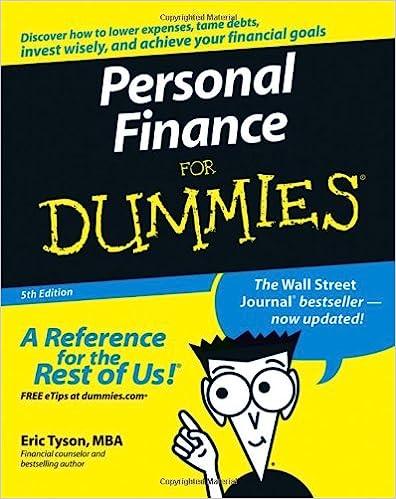

Assume that you have just inherited $100,000 from a long forgotten relative? You have identified a hedge fund in which to invest this money. The portfolio of assets that the hedge fund invests in returns an average of 12% a year (before any taxes and fees). However, the return is uncertain, and can be reasonably well modeled by a Normal distribution with a mean of 12% and standard deviation of 8%. Hedge fund managers typically use a 2/20 fee structure. What this means is that they charge two different fees - A management fee (typically 2%) that is calculated as a percentage of the amount invested, and an incentive fee (typically 20%) that is calculated as a percentage of the profits made. So for instance, if you invest $100 in the fund and the fund makes a 6% return then, per the 2/20 structure, the fund will charge you $2 in management fees ($100*2%) and $1.2 in incentive fees (106 - 100)*20%), thereby leaving you with 100 + 6-2 -1.2 = $102.8. This final amount is referred to as the Net Asset Value (NAV) of your investment, i.e., your investment plus gross return minus fees. The hedge fund you have identified offers two different investment options. In both cases, the investment will be made in the same portfolio of assets (see first paragraph), thus producing the same gross return, but the second option provides an "insurance of sorts as described below. Fund Option 1: Fund option with no guarantee Management fee - 2% of the amount invested Incentive fee - 20% of the gross profits. The incentive fee is zero if the fund loses value (i.e., if the gross return is negative). Fund Option 2: Fund option with a guarantee Management fee - 3% of the amount invested Incentive fee - 20% of the gross profits. The incentive fee is zero if the fund loses value (i.e., if the gross return is negative). Guarantee - If the fund loses value (i.e., gross return is negative), the losses will be borne out of the hedge fund's books. So in effect, this fund option guarantees that your gross return never goes below zero. The gross return is unaffected if it is positive (i.e., the fund gains value) and simply zero if it is negative (i.e., the fund loses value). Your problem is to choose the fund option that maximizes the expected value of your pre-tax Net Asset Value at the end of the year. Assume that you have to choose only ONE of the two funds, and cannot split money between the two. Set up a model to analyze the problem. Which fund option would you choose? Assume that you have just inherited $100,000 from a long forgotten relative? You have identified a hedge fund in which to invest this money. The portfolio of assets that the hedge fund invests in returns an average of 12% a year (before any taxes and fees). However, the return is uncertain, and can be reasonably well modeled by a Normal distribution with a mean of 12% and standard deviation of 8%. Hedge fund managers typically use a 2/20 fee structure. What this means is that they charge two different fees - A management fee (typically 2%) that is calculated as a percentage of the amount invested, and an incentive fee (typically 20%) that is calculated as a percentage of the profits made. So for instance, if you invest $100 in the fund and the fund makes a 6% return then, per the 2/20 structure, the fund will charge you $2 in management fees ($100*2%) and $1.2 in incentive fees (106 - 100)*20%), thereby leaving you with 100 + 6-2 -1.2 = $102.8. This final amount is referred to as the Net Asset Value (NAV) of your investment, i.e., your investment plus gross return minus fees. The hedge fund you have identified offers two different investment options. In both cases, the investment will be made in the same portfolio of assets (see first paragraph), thus producing the same gross return, but the second option provides an "insurance of sorts as described below. Fund Option 1: Fund option with no guarantee Management fee - 2% of the amount invested Incentive fee - 20% of the gross profits. The incentive fee is zero if the fund loses value (i.e., if the gross return is negative). Fund Option 2: Fund option with a guarantee Management fee - 3% of the amount invested Incentive fee - 20% of the gross profits. The incentive fee is zero if the fund loses value (i.e., if the gross return is negative). Guarantee - If the fund loses value (i.e., gross return is negative), the losses will be borne out of the hedge fund's books. So in effect, this fund option guarantees that your gross return never goes below zero. The gross return is unaffected if it is positive (i.e., the fund gains value) and simply zero if it is negative (i.e., the fund loses value). Your problem is to choose the fund option that maximizes the expected value of your pre-tax Net Asset Value at the end of the year. Assume that you have to choose only ONE of the two funds, and cannot split money between the two. Set up a model to analyze the problem. Which fund option would you choose








